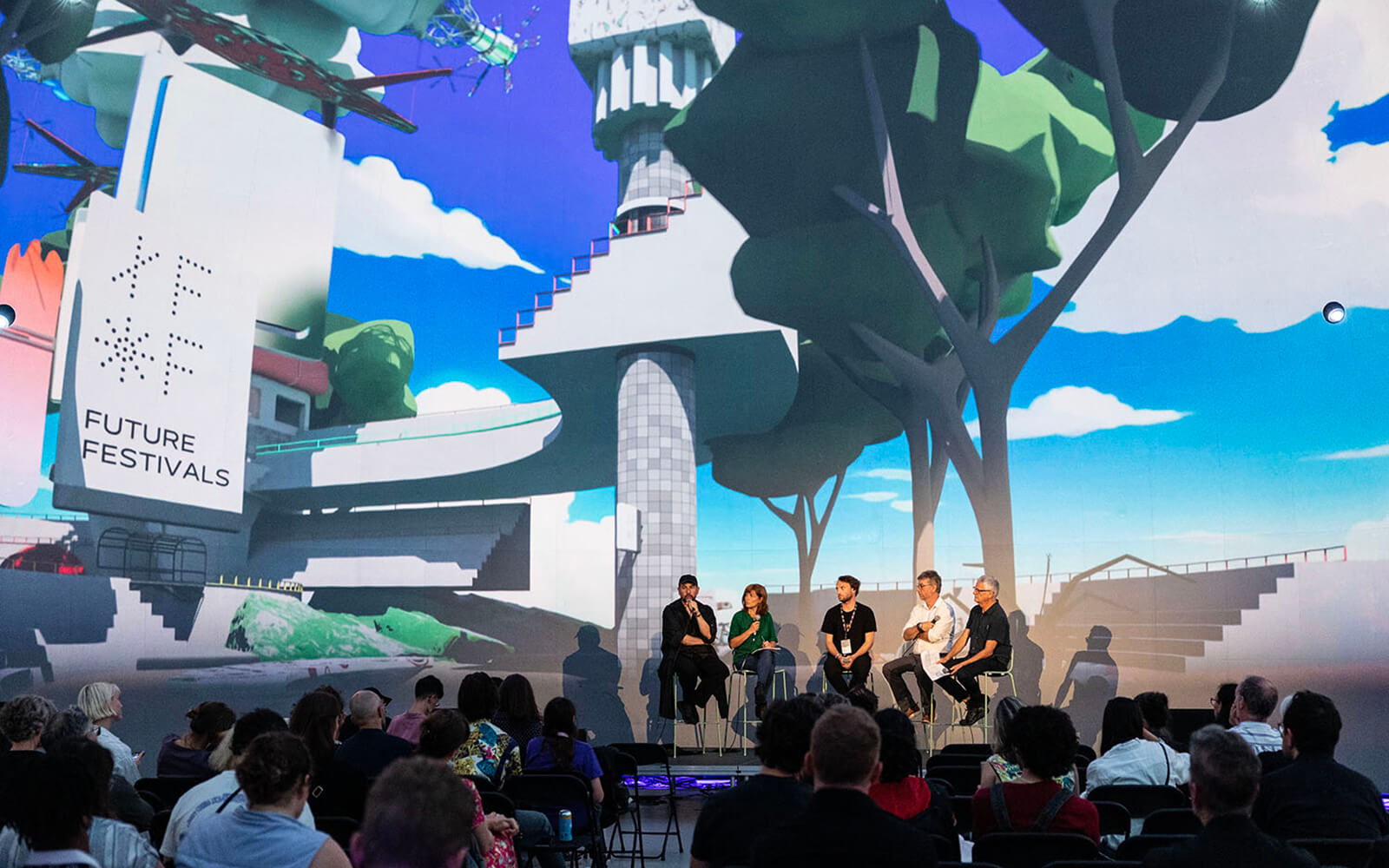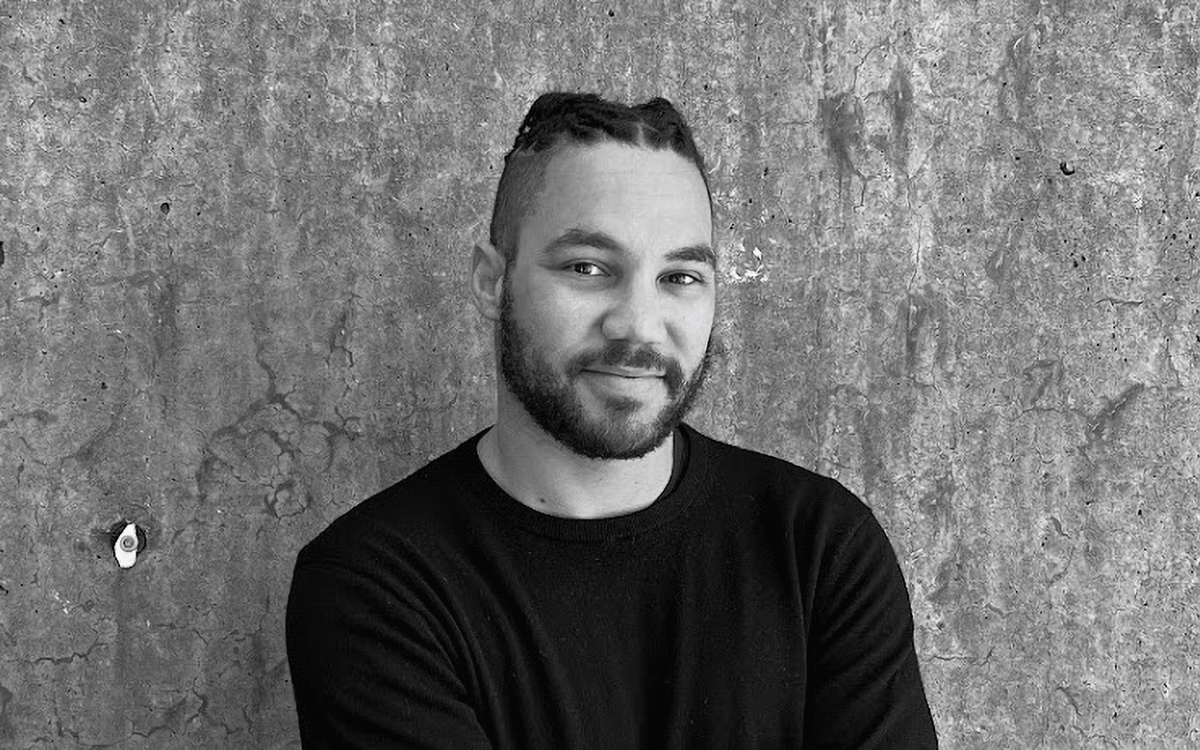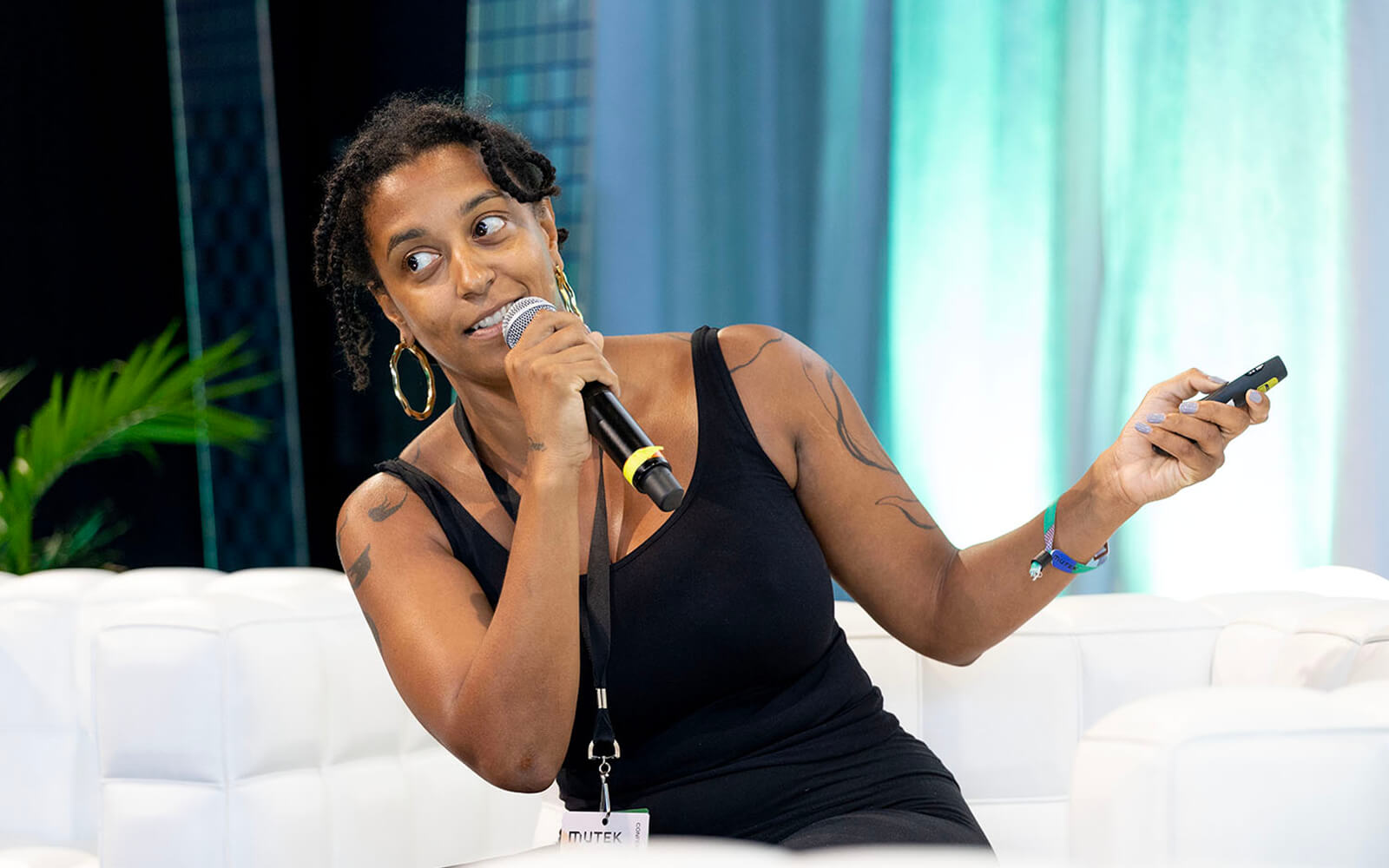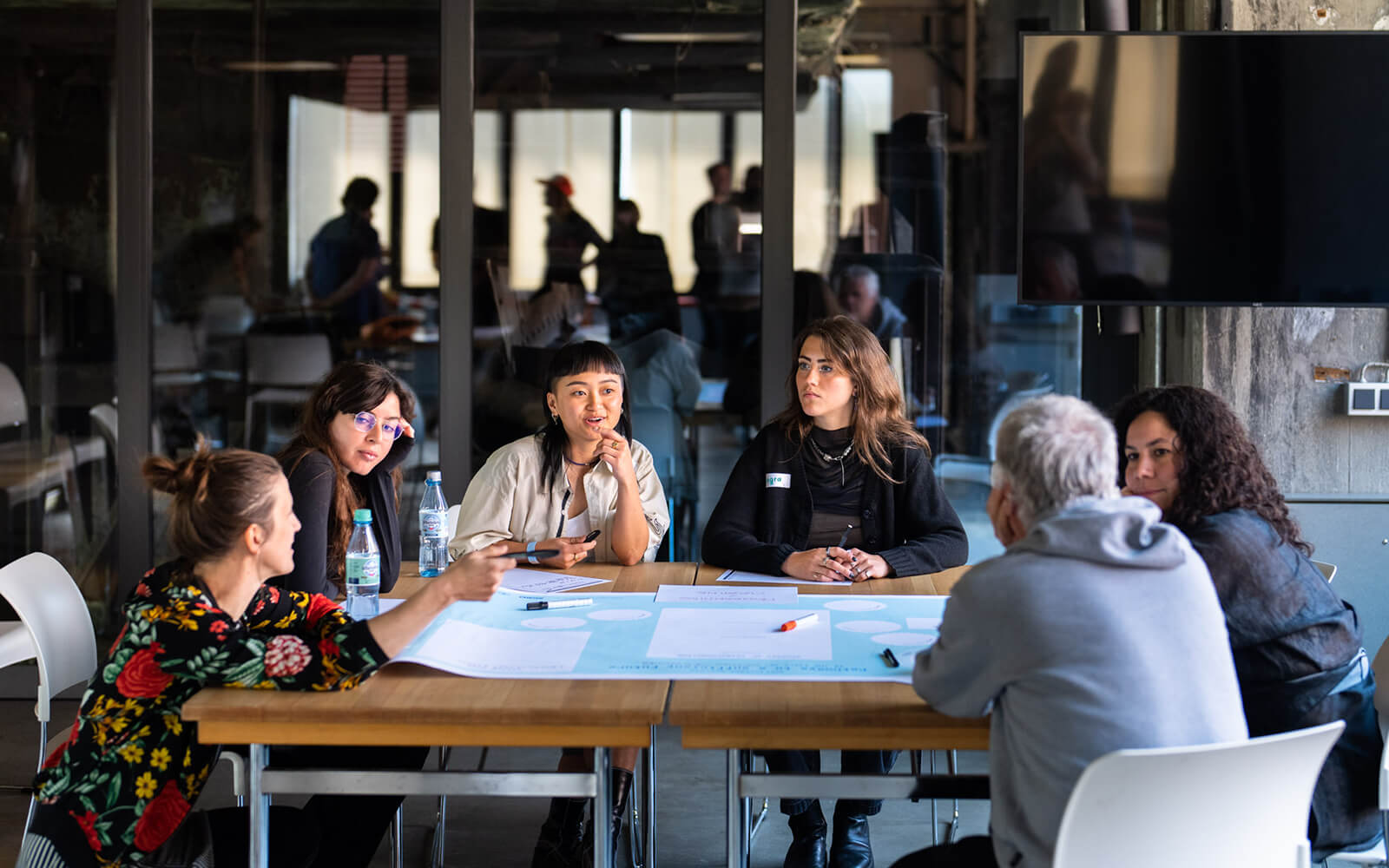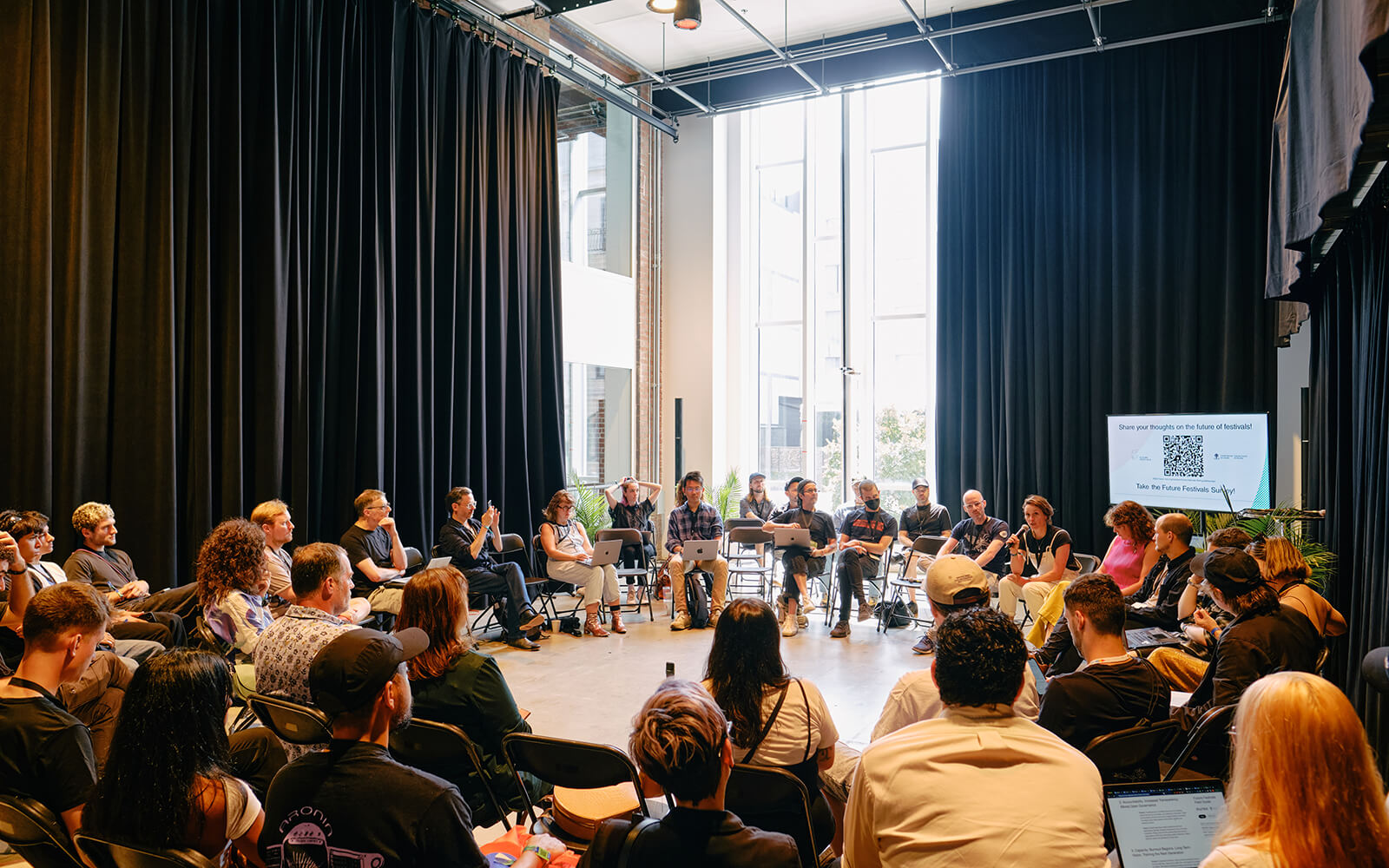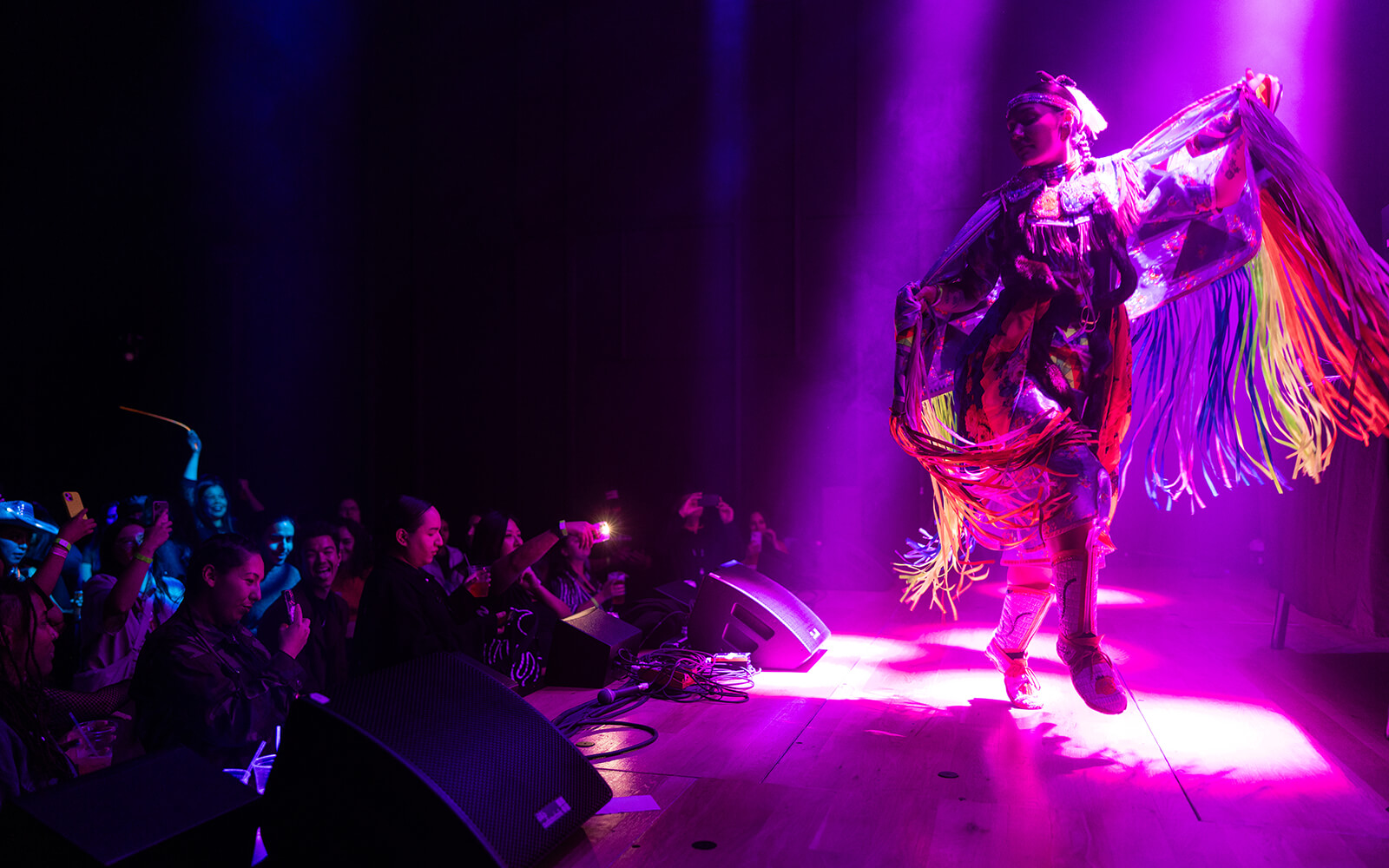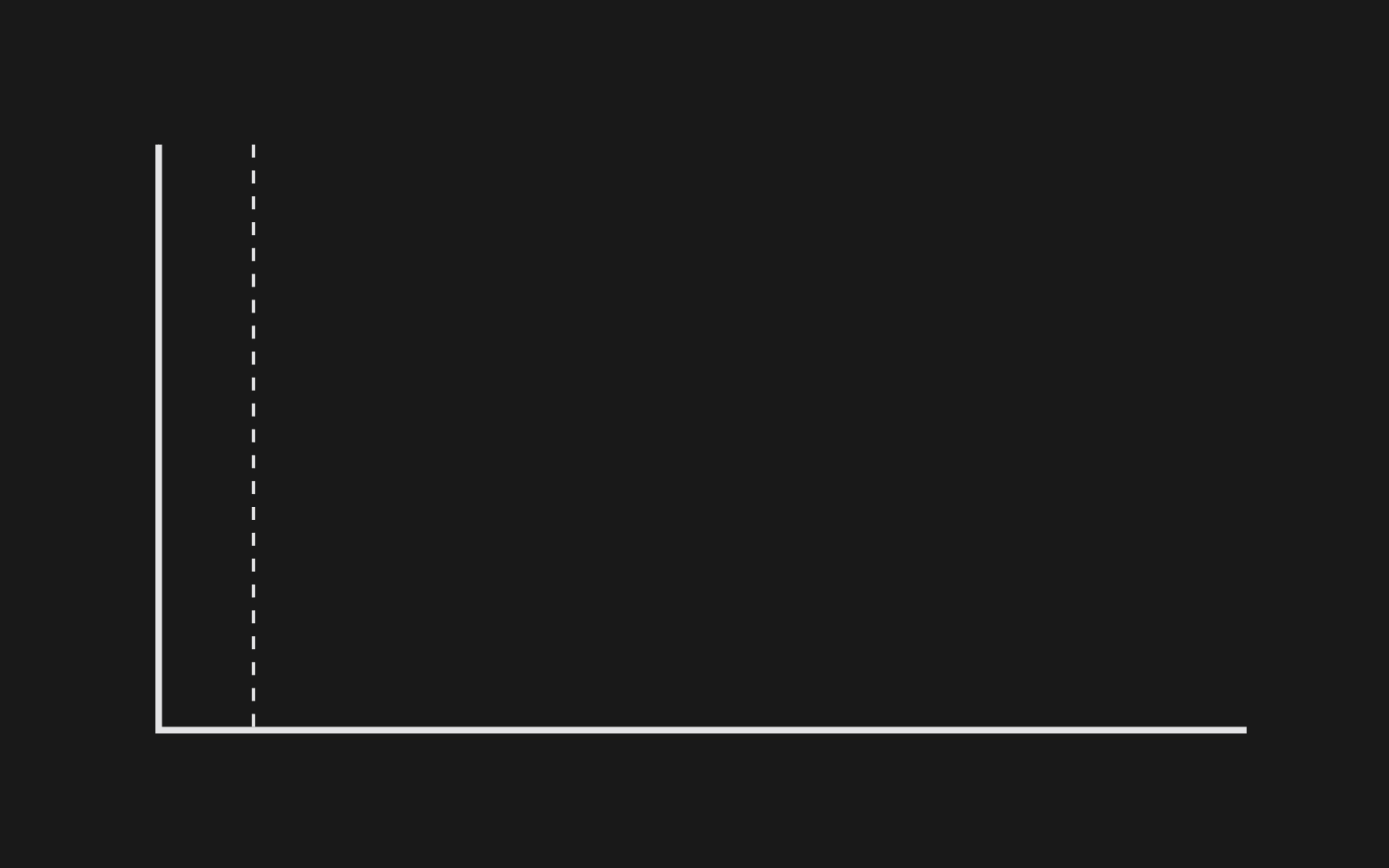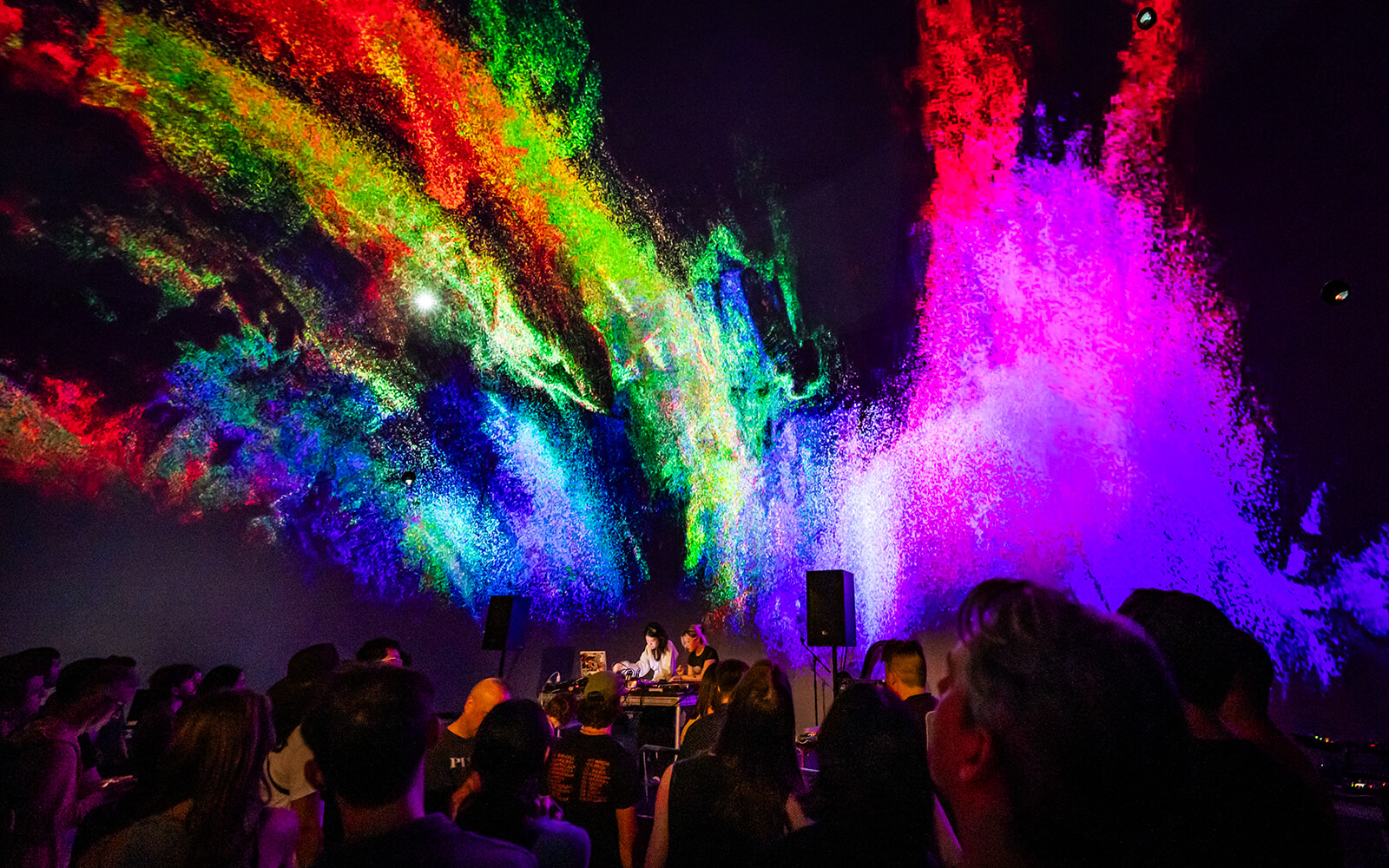Future Festivals Field Guide: Unlocking Temporary Utopias
Patrick Kearney (Le REFRAIN), Sandra O’Connor (Festival TransAmériques), Philippe U. del Drago (Le FIFA), and Laurent Bigarella (Arty Farty, Reset!), and Alain Mongeau (MUTEK) discuss the state of the cultural sector
Photo: Maryse Boyce
Photo: Maryse Boyce
European and Québec-based festival makers take stock of harsh post-pandemic economic realities and share tales of resilience and success.
Immersed in the 3D festival utopia N O R M A L S created for the SATosphere, the summit’s closing panel offered a call to action: “Festivals of the World, Unite! Cultivating Resilient Festival Networks” brought together Québec and European festival professionals Patrick Kearney (Le REFRAIN), Sandra O’Connor (Festival TransAmériques), Philippe U. del Drago (Le FIFA), and Laurent Bigarella (Arty Farty, Reset!) to talk advocacy and collaboration. MUTEK’s own Alain Mongeau stepped in as moderator, reminding us how, in 2023, several local festival makers sounded the alarm about the viability of the cultural sector in the aftermath of the pandemic and how little things have changed since.
“We all believe that our cultural programming brings something good to the world,” Philippe U. del Drago said. Festivals are risky, he argued; there is a private financial risk for cultural organizations and a public risk for the funders that support them. Trying to manage this risk and serve a community of artists and an audience is nearly impossible. He explained that It didn’t matter that his festival Le FIFA—the leading film festival in the world focused on films about art and media art—is partners with the Louvre and MoMA, “the fact remains that a movie ticket is still about $13 in the eyes of the public.” There is a disconnect between the harsh economic realities festivals face and the value they provide to global ecosystems.
Sandra O’Connor from Festival TransAmériques (FTA) picked up the risk discussion and outlined how FTA mitigates risk by helping catalyze ten adventurous dance and theatre co-productions each year. “The co-productions we support during our festival generate $1.5 million yearly fees for us and our artists,” she explained. That revenue flywheel has allowed FTA to broaden its artistic mandate. “In recent years, we have emphasized artists from First Nations, global First Nations, because it’s called the TransAmériques festival—we try to touch every continent,” she noted.
Introducing Le REFRAIN, a network representing 110 festivals and 16 artistic disciplines across Québec, Patrick Kearney explained how the post-pandemic faltering economy spurned cultural producers into action. He explained how a festival or two could hypothetically fail in Montréal or Québec City without drastic implications but that it is a different story outside big cities. He cited Furies, a dance festival in Marsoui, a village in the Gaspé Peninsula region of Québec that is so small that “if you drive too fast, you pass right through it.” We must protect the faith and goodwill implicit in hosting the arts in small communities, he insisted.
Laurent Bigarella of the Lyon-based cultural organisation Arty Farty introduced Reset!, a network founded in 2021 that represents festivals in 28 countries. He described the network’s “three major missions” as documenting threats to the cultural sector, empowering members, and advocating on their behalf. “We make proposals and champion them within the European Commission and to local authorities,” he explained. Reset fights for the survival of progressive festivals as bold and independent arts programming “goes beyond the cultural or artistic prism” and promotes pluralism.
“Organizing a festival in Maroui, a Québec village of 250 inhabitants that is hyper-devalued economically, you need a lot of faith and a bit of madness to take on that task.”
Take-away: Festivals are an essential service. If eclectic festivals aren’t protected, they will be replaced with centralized and homogenous purveyors of culture—or worse yet, they won’t be replaced at all, making some communities into ’cultural deserts.’ The stakes are high, and the festivals of the world must unite!
Maurice Jones (MUTEK), Naomi Johnson (imagineNATIVE), Jessie Mill (Festival TransAmériques), and Drew Hemment (The New Real) look back and ahead
Photo: Maryse Boyce
Photo: Maryse Boyce
Four cultural innovators reflect on the first-ever Future Festivals Summit and discuss exciting paths forward for festival makers.
Five days after the summit, Future Festivals lead Maurice Jones gathered Drew Hemment (The New Real), Naomi Johnson (imagineNATIVE), and Jessie Mill (Festival TransAmériques) to reflect on how to turn theory and speculation into practice. Organized around the ‘six trajectories for festival futures’ that Hemment shared during his keynote, the four cultural innovators shared insights and reflections based on their respective operations.
Mill responded to the notion that festivals were lightning rods for weak signals by citing her collaborative dialogue with co-Artistic Director Martine Dennewald, which is rooted in friendship and mutual curiosity. “We try to challenge the idea of ‘newness’ and ‘the contemporary’ and engage ancestry and tradition. We incorporate art made with new and old technology—analog technology.” The duo seeks out artists versus simply booking those touring and doing PR. They are also mindful of the contrast between what is happening in Canada and internationally.
The conversation about how festivals foster community and create new senses and forms fanned out in a few directions. Johnson enthused about a heartwarming exchange with a young artist who lived and worked on a reserve. They told her, “I feel like a unicorn in my community. I’m locked away in my room, making all these magical things, and nobody understands what I’m doing. When I come to imagineNATIVE, I realize, wow, look at all these other unicorns!” Helping that artist feel connected happened within her festival. Jones also described how she does a lot of advocacy outside it, like running a booth for Indigenous creators at the European Film Market in Berlin each winter. “We’re the only ones there representing Indigenous creators,” she says, explaining that presence enables productive ‘first conversations’ about Indigenous film with countless industry figures.
Beyond directly serving an audience and community of artists, Hemment explained how festivals can nurture cross-sectoral collaborations. He cited the GROW Observatory, a citizen science and climate activism platform that blossomed from programming FutureEverything organized for the EU climate action department in the late 2000s. “The ‘space’ of the festival can be a resource for other organizations—it can open up collaborations and partnerships,” he concludes.
Hemment sounded an alarm about social media in a discussion about how festivals enable serendipitous discovery.” When opaque algorithms control media discovery, we don’t see or understand how that’s happening—how our choices are guided and shaped by Big Tech.” Coming together to celebrate outside that regime, to have “shared collective experiences,” is now even “more vital.” Johnson chimed in and explained how the ongoing harm caused by colonialism was another force to battle. Recalling an exercise at the Future Festivals Mois Multi retreat, where workshop participants were asked (geographically) where they would be in the coming decades, she recalls how “everybody in the room moved around, like all over the place. My co-worker Kaitlyn Tomaselli and I stayed in the same spot.” This surprised everyone, and facilitator Rafael Dernbach asked why the duo hadn’t moved. Johnson answered, “We’re from communities with very little left, so we feel beholden and tied to our land—to ensure it’s protected.” She further explained that ‘serendipitous discovery’ in dance, film, and other mediums helps marginalized folks “see new universes, new worlds,” which is more about resilience than consumption.
“I feel like a unicorn in my community. I’m locked away in my room, making all these magical things, and nobody understands what I’m doing. When I come to imagineNATIVE, I realize, wow, look at all these other unicorns!”
The conversation concluded with wild optimism: a discussion about how festivals can provide regenerative infrastructure and catalyze planetary intelligence. Mill excitedly shared Nigamon/Tunai, a work presented at the Festival TransAmériques 2024 by Anishinaabe theatre artist Émilie Monnet and Inga Nation cultural leader Waira Nina. “They brought a real forest and water onstage and played them, thanks to Leonel Vasquez, the sound designer they collaborated with,” she gushed. In addition to trees and water, the elemental work used stones and copper to sound “a polyphonic manifesto” against extractivism in the Global North and South. “It wasn’t just a beautiful artwork,” says Mill. “It was an experience to consider how we encounter elements, plants, and other types of beings.” Speaking to the nonhuman, Hemment explains how Nature recently joined FutureEverything’s board. “All credit goes to our amazing new director, Lucy Sollitt,” Hemment said of the novel addition to his former organization’s governance team. “It is not enough to talk about climate, to make small gestures. We’ve got to make a fundamental change. We need Nature to participate in governance,” he concluded.
“We had six predictions from Drew that helped us to think about what festivals can be,” Jones said to wrap up the session. “They can be much more than these provocations, or they can only respond to one or two of them.” Festivals are nimble and can move much faster than bigger art organizations or museums, which is a blessing and a curse. “Festival makers are stuck in a loop of only planning for the next year—which is part of why it is difficult for them to have a long-term vision.” The summit provided cultural producers with a toolkit to help identify and articulate that vision. Now, we wait and see what they do with that toolkit in the years ahead.
“It is not enough to talk about climate, to make small gestures. We’ve got to make a fundamental change. We need Nature to participate in governance.”
Take-away: The closing conversation was an encouraging conclusion to the Future Festivals Summit and MUTEK Forum. Hearing examples of Hemment’s predictions grounded in practice and artworks was exciting. The summit asked participants to speculate quite a bit. They had to take stock of and project their ideals into the future and make themselves vulnerable for some challenging exercises. In contrast, the wrap-up session clarified that festival producers are already exploring many of these vital paths forward. It also revealed that these paths aren’t necessarily easy to navigate either. Considerable work is required to move forward against daunting challenges like the climate crisis, colonialism, and our algorithmic echo chambers. But as Hemment noted when he appraised the assembled festival producers earlier in the week, “the energy and fire is still there.”
Future Festivals Field Guide
Future Festivals Field GuideExplore more of "Future Festivals Field Guide:"
→ HOLO.mg/stream/
→ HOLO.mg/future-festivals-field-guide/
